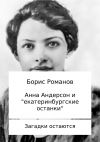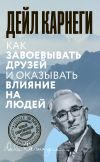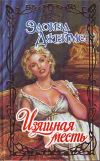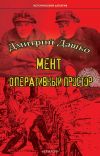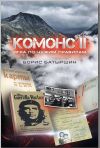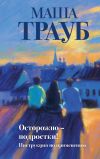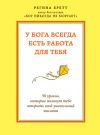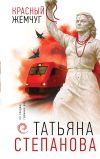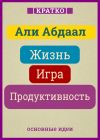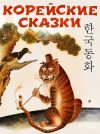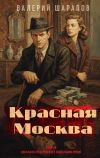Текст книги "Anna-Anastaia: the old and new versions and discussion"
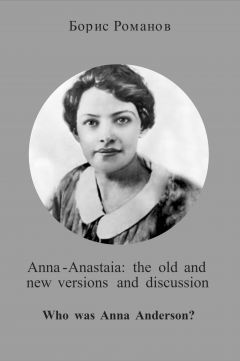
Автор книги: Борис Романов
Жанр: Биографии и Мемуары, Публицистика
Возрастные ограничения: +16
сообщить о неприемлемом содержимом
Текущая страница: 1 (всего у книги 3 страниц) [доступный отрывок для чтения: 1 страниц]
Riddle of Anna Anderson remains unsolved.
Foreword. The problem of DNA tests.
It is known the dozens of books and hundreds of articles about Anna Anderson, best known for the role of pretender rescued daughter of Nicholas II, Anastasia. It would seem that after the comparative DNA tests (which are allegedly not confirmed kinship Anderson and the royal family), the matter is closed. However, with the exception of those DNA tests, a huge set of evidence and the facts speak in favor of self-identification Anderson as Anastasia.
In this brochure, we briefly discuss the old and new versions and discussion of this subject, as well as give a detailed critique of the DNA tests and the arguments in favor Anna Anderson as Anastasia.
(Note: all my comments here are only my personal value judgments (and I do not claim to know the truth in the last stage))
The most common opinion about Anna Anderson can be found in Wikipedia
«Anna Anderson (16 December 1896 – 12 February 1984) was the best known of several impostors who claimed to be Grand Duchess Anastasia of Russia. <…> DNA tests on a lock of Anderson's hair and surviving medical samples of her tissue showed that Anderson's DNA did not match that of the Romanov remains or that of living relatives of the Romanovs.[9][10] Instead, Anderson's mitochondrial DNA matched that of Karl Maucher, a great-nephew of Franziska Schanzkowska.[10] Most scientists, historians and journalists who have discussed the case accept that Anderson and Schanzkowska were the same person.[3][11][12][13][14]»
All critics of Anna Anderson appeals to the official results of the DNA tests "Yekaterinburg remains". We read about these tests in the same Wikipedia article:
«In 1991, the bodies of Tsar Nicholas II, Tsarina Alexandra, and three of their daughters were exhumed from a mass grave near Ekaterinburg. They were identified on the basis of both skeletal analysis and DNA testing.[125] For example, mitochondrial DNA was used to match maternal relations, and mitochondrial DNA from the female bones matched that of Prince Philip, Duke of Edinburgh, whose maternal grandmother Princess Victoria of Hesse and by Rhine was a sister of Alexandra.[125] The bodies of Tsarevich Alexei and the remaining daughter were discovered in 2007. Repeated and independent DNA tests confirmed that the remains were the seven members of the Romanov family, and proved that none of the Tsar's four daughters survived the shooting of the Romanov family.[3][5][6]
A sample of Anderson's tissue, part of her intestine removed during her operation in 1979, had been stored at Martha Jefferson Hospital, Charlottesville, Virginia. Anderson's mitochondrial DNA was extracted from the sample and compared with that of the Romanovs and their relatives. It did not match that of the Duke of Edinburgh or that of the bones, confirming that Anderson was not Anastasia. However, the sample matched DNA provided by Karl Maucher, a grandson of Franziska Schanzkowska's sister, Gertrude (Schanzkowska) Ellerik, indicating that Karl Maucher and Anna Anderson were maternally related and that Anderson was Schanzkowska.[4][10] Five years after the original testing was done, Dr. Terry Melton of the Department of Anthropology, Pennsylvania State University, stated that the DNA sequence tying Anderson to the Schanzkowski family was «still unique», though the database of DNA patterns at the Armed Forces DNA Identification Laboratory had grown much larger, leading to «increased confidence that Anderson was indeed Franziska Schanzkowska».[126]
Similarly, several strands of Anderson's hair, found inside an envelope in a book that had belonged to Anderson's husband, Jack Manahan, were also tested. Mitochondrial DNA from the hair matched Anderson's hospital sample and that of Schanzkowska's relative Karl Maucher but not the Romanov remains or living relatives of the Romanovs.[10][127]»
However, there are known many facts that cast doubt on some of the official DNA tests. In particular, genetic examination of the remains, «Alexis» and «Maria» (or «Anastasia») in 2007 was conducted with two teeth (which were found among these remains) – but some experts (eg, MD Vyacheslav Popov) stated categorically that there are no morphological evidence that these two teeths could belong to any member of the royal family
In addition, other genetic studies do not support the official point of view (presented above, Wikipedia). A former member of the Russian government's expert committee to study the Ekaterinburg remains, MD Vyacheslav Popov wrote in 2007, after the discovery of the remains of "Alexis" and "Anastasia" (or "Maria"):
"<…> The greatest controversy erupted today over the genetic identification of the remains: <…>b) Geneticist P. Ivanov tried to establish the genetic characteristics of a controversial teens teeth and of a fragment of a handkerchief soaked with blood heir of Nicholas Alexandrovich (after being wounded in 1891 in Japan). He was unable to identify any genetic parameters of these objects, or their gender. This requires an explanation.
c) The Russian geneticist L. Zhivotovskiy published a critical note about the shortcomings in the oficial genetic analysis (the journal «Annals of Human Biology», 1999, Volume 21, 6, pp. 569-577). Replies to this criticism was not followed.
d) In 1999, a Japanese professor T. Nagai and colleagues published a study of hair from the head of his brother Nicholas II – Georgy, his nail plates, the fingerprint stains sweaty vest Nicholas II and the blood-Kulikovskogo Tikhon Nikolayevich Romanov. The results do not coincide with the data of the official genetic examination carried out with the participation of P. Ivanov. The results of studies of T. Nagai were published in the journal «Medicine and Biology» (December 10, 1999, Volume 139. 6), and subsequently T. Nagai spoke at international conferences geneticists in Münster (Germany) in 2001, Melbourne (Australia ) in 2001 and at the International Congress of forensic experts in St. Petersburg in 2004.
e) In 2004, the American geneticist Knight et al published in the journal «Annals of Human Biology,» the results of the genetic study of the remains of Elizabeth Feodorovna – the sister of Empress Alexandra Feodorovna. Knight's results are in conflict with the results obtained in the course of official genetic testing with P. Ivanov.
f) In 2003-2004, Yekaterinburg population geneticists have found that in the Ural population there is rather common kind of mutation, which is similar to the one found genetics in the United States. (with P. Ivanov) – (which they said as very uncommon).
All it means is that, regardless of the cause controversy, the results of genetic studies in any case is not absolute, and that they initially need to be thoroughly and repeatedly tested. In any case, the oficial results of genetic studies (with P.Ivanov) in any case can not be independent of evidentiary value in the identification of the Ekaterinburg remains as the remains of Tsar's family."
We'll look other problems and shortcomings of official DNA tests later in the section «"Resurrection" of Franziska Shanzkowska» (subsection «DNA-testing is not “A sacred cow”»)
In addition, Dr. Popov has put in his letter the following questions about the old and the new «Yekaterinburg remains» (quote from reductions in my retelling)
1. From the transcript of the initial inspection of the place of burial (11-13 July 1991) and from the explanation of the first searchers (Avdonin and Ryabov), we can conclude that the volume of excavation of burial were so small that it could not accommodate three skulls, allegedly found there and seized by these people. Dr. Popov writes (verbatim, in my translation): "Maybe these skull were not found and removed from the burial in 1979, but were placed into the grave in 1980, when Avdonin and Ryabov again" worked" in this grave?"
2. The skull, allegedly belonging to Nicholas II (skull number 4), has no trace of wounds he received in Japan in 1891. Meanwhile, the famous report of three doctors who provided medical assistance in 1891 in Japan, immediately after the attack: in this report doctors talked about a piece of bone 2.5 cm long, which they removed from head of Nicholas.
3. As I wrote above, the genetic examination of the new remains, "Alexis" and "Maria" (or "Anastasia") in 2007 was conducted with two teeth (which were found among these remains) – but some experts stated categorically that there are no morphological evidence that these two teeths could belong to any member of the royal Romanov's family
4. As evidence of the belonging of these remains to the royal Romanov's family, a photo superposition was performed. In many aspects, this photo superposition was, to say the least, imperfect. In particular, Dr. Popov noted that two experts photo superposition came to two different conclusions about the skull number 4 (allegedly belonging to Nicholas II).
5. Sculptural reconstruction of the heads of the royal Romanov's family is extremely unsatisfactory, because the sculptor knew who they should be similar. Dr. Popov also wrote (verbatim, in my translation ): "Such a reconstruction would have a conclusive legal effect only if «sculptor» has never seen in his lifetime the images of these people's faces, sculpted portraits which he produces."
(The letter to Dr. Popov you can read in full on the link: http://rusk.ru/st.php?idar=105031 (in Russian))
A short list of evidence of identity of Anna Anderson and Anastasia.
For those who would like to study the problem of identification of Anna Anderson, I advise you to read two books:
«Anastasia: The Riddle of Anna Anderson" by Peter Kurth;
«The Resurrection of the Romanovs: Anastasia, Anna Anderson, and the World's Greatest Royal Mystery» by Greg King & Penny Wilson.
These studies in most detail set forth the arguments "for (yes)" and "against (no)" an identification of Anna Anderson as tsar's daughter Anastasia. My criticism of the book by G. King and P. Wilson is here presented in a separate section of this publication («" Resurrection "of Franziska Shanzkowska»). Below I briefly lay out its findings of these studies – in favor of this identification.
1. It is known the dozens (at least about forty) somehow confirmed later stories by Anna Anderson about the life of the Russian tsar family, which could not be known to anyone but the tsar's daughter, and which till now has not refuted or discredited by her opponents (see Amazon.com. Customer Reviews on the King&wilson's book "The Resurrection of the Romanovs: Anastasia, Anna Anderson, and the World's Greatest Royal Mystery"/)
2. It is known the diagnoses (psychological aspects of medical reports) of the seven doctors of Anna Tchaikovsky (Anderson) from various psychiatric hospitals and health centers. Four of these doctors were professional psychologist (Dr.). All known diagnoses and medical reports say that (quote) "Mrs. Anna Tchaikovsky (Anderson) could born and live earlier only into an aristocratic family." All doctors unanimously rejected (and I quote) "the possibility of fraud, or hypnosis, or psychopathy in its self-identity." – This is the main conclusion of all physicians.
In particular, the famous German psychiatrist in 1925, Bonhoeffer wrote: «Her posture, facial expressions and grace in a manner of speaking are indicating that she comes from an educated family … She probably grew up surrounded by the Grand Duchess, she was the daughter of an officer of the tsar's court or any of the royal family … She could not take over all it from the books or stories of others.» («Anastasia. Riddle Grand Princess» Peter Kurth, p.103, 104). In addition, I quote below the certificate of another psychiatrist of the sanatorium «Shtillehaus» in Oberstdorf, where AA was in the autumn and winter of 1927 («Anastasia. Riddle Grand Princess» Peter Kurth, p.150-153).
Dr. E.Saathof (Chapter sanatorium) wrote in the final diagnosis (along with the doctor Eitel): «I completely ruled out that Frau Tchaikovsky – the impostor. She is in any case always behaved quite differently, as one would expect from a fake one.»
Dr. Saathof also wrote «I think it is impossible that this woman was from the lower classes of society … I think it is absolutely impossible that this woman could be able deliberately played the role of the other woman. Moreover, the observation of her behavior as a whole, in any way do not contrary to her assertion that she is the one who calls herself.»
3. Anna Anderson could not be Franziska Shantskovska – for many reasons which I have outlined below in more detail in the section «Resurrection" of Franziska Shanzkowska»,
Here, at least, I should note that Franziska Shanzkovska was much taller Anna Anderson that Shanzkovska wore shoes several sizes too big, that Shanzkovska was nulliparous woman (Anna Anderson, on medical evidence, gave birth a son), and, finally, even the brother of F. Shanzkovska refused admit as his sister Anna Anderson
4. Comparative DNA tests (1994-th and 2010-s) of Anna Manahan (Anderson) and a great-nephew of F.Shantskovska, K. Maucher, – which allegedly gave positive results – these DNA tests can not be accepted for review by any modern court for two reasons: . First, their probability of error by orders of magnitude higher than the current requirements for DNA tests, and, secondly, because the "raw materials" of Anna Anderson (tissue samples of internal organs, and hair) have dubious origins and it were not provided with reliable oficial support in a shipping to the laboratory DNA analysis
In addition to a complete external resemblance (including also highlighted blue eyes, smile and manner of expressing emotions and behavior), Anna Anderson (hereinafter AA) and Anastasia Nikolaevna Romanova (hereinafter ANR) have also the following items of identification:
1. AA as well as ANR had a very severe congenital deformity of both feet legs "Hallux Valgus" (bunions), and just on the right foot is much greater. This is an extremely rare coincidence. More on this, see the section «Cinderella's glass slippers of Grand Duchess Anastasia».
2. Forensic judicial procedures comparison of the ears and of the handwritings of AA and ANR in the 1970-s and 1980-s have confirmed their identity.
3. AA had those same scars and traces of wounds that were inflicted soldiers to ANR in the basement of Ipatiev House at night July 17, 1918
4. AA had the same scar on his forehead, like ANR befor 1917, and she covered it with the same fringe.
5. AA knew many little-known details of private life and the nicknames of members of the royal family, and also the especially of their nature and manner of their inner circle. Many of those people (of the inner circle of the royal family), which had known ANR very well befor 1917) had no doubt that AA was ANR. Among such people are called Lily Teng, Tatiana and Gleb Botkin, GD Andrew (Romanov), Alexandra Tyegleva (wife of Pierre Gilliard and nurse of ANR till 1917), Xenia Leeds (Romanova) and also the German Prince Sigismund, the Swedish Princess Martha and the Norwegian crown prince. Not to mention those who at first recognized AA as ANR, but then refused (as Pierre Gilliard or valet Volkov)
6. AA, as AHP could read on French, German, English and Russian languages.
7. AA was the first who spoke about the secret visit of brother of Empress Alexandra, German Prince Ernst of Hesse, in Russia (in Tsarskoye Selo) in 1916. He, and all initially denied it – but AA was adamant, and she was right. By the way, just only this AA's statement made of "Uncle Ernie" her fierce and ruthless enemy for life, forever…
8. AA's face in excitement or in anger, was covered with red spots – just as the face of the Empress Alexandra. Finally, AA was a strict vegetarian, as the Empress Alexandra – NB that was a rarity in those time (in the begining of XX centure). In addition, AA liked sweet – as ANR liked it too. And they loved also the same animals (cats, dogs and parrots).
9. AA remembered some wounded soldiers and officers with whom ANR communicated in a hospital in Tsarskoye Selo in 1915-1917. And also AA tell anyone unknown details about the a life of tsar's family in the period of their life in Tobolsk and Yekaterinburg in 1917-1918. In particular, her detailed story about a home staging performances of members of the Royal Family in Tobolsk was confirmed 30 years later in the memoirs of teacher of royal children Gibbs.
10. After the death of the Dowager Empress Maria Feodorovna, in 1928 in Copenhagen, 13 members of the House of Romanov, issued a statement which declared AA as impostor. However, only one person out of these 13 of the Romanovs, only GD Olga saw AA and talked with her. But GD Olga talked with AA when she was very sick and not able to full communion. Nevertheless, some evidence suggests that at first GD Olga had recognized AA as ANR, and only later had changed her opinion…
Of course, all this is interesting, and all of this together is evidence in favor of the identity of Anna Anderson as Anastasia, But many people ask the question: how Anastasia could be rescued in July 1918? It is known two versions of salvation Anastasia. In the next two sections, I present these versions.
Version of rescue of the tsar's daughters from Perm.
In 1970-s American journalists S. Sammers and T. Mangold studied previously unknown part of the archives of the investigation in 1918-1919., found in 1930. in the U.S., and published the results of its investigation in 1976 [Sammers S., Mangold T. The File on the tsar. – London, 1976.] According to them, the findings NA Sokolov about the death of the entire royal family were made under pressure of Kolchak (Head of anti-Bolshevik White forces in 1918-1920), who for some reason was advantageous to declare killed all the members of the family.
A. Kolchak at the end of 1919 could order the investigator Sokolov announce killed all the members of the royal family, for two reasons: first, to promote the anti-Bolsheviks propaganda. The second reason is that, in December 1919, Kolchak has learned from a letter from his wife (from Romania), that rescued Anastasia crossed the border into Romania and escaped the Bolsheviks – Kolchak wanted mislead the Bolsheviks on the fate of Anastasia.
S. Sammers and T. Mangold consider more objective investigation and the findings of other investigators White Army (A. Nametkin I. Sergeev and A. Kirsta). According to them (Summers and Mangold's) opinion, the most likely to have been shot in Yekaterinburg only Nicholas II and heir, – and the Empress and her daughters were moved to Perm, and their subsequent fate is unknown. S. Sammers and T. Mangold inclined to believe that Anna Anderson was really Grand Duchess Anastasia.
In connection with these studies of American journalists, we are interested in the statement of the Russian Orthodox Church Patriarch Kirill on July 26, 2012. I quote from the post agency Interfax:
“Kiev, July 26, 2012. Interfax – The Moscow Patriarchate might reconsider its attitude toward what is widely believed to be the remains of Russia's last Emperor Nicholas II and members of his family and entourage, which were found at the site of their shooting near Yekaterinburg and were buried at the Imperial Burial Vault at the Cathedral of the Peter and Paul Fortress in St. Petersburg in 1998.
«I would like to announce very important information we have received from New York, which is related to the circumstances of the royal family's death. I believe these circumstances will help us determine our position, among other things, on the so-called Yekaterinburg remains. I will provide you with the relevant materials, and we will have to discuss this and make the necessary decision,» Patriarch Kirill of Moscow and All Russia said in opening a conference of the Russian Orthodox Church's Holy Synod in Kiev on Thursday.”
See http://www.interfax-religion.com/?act=news&div=9586
Some commentators believe that this statement of the Patriarch due precisely to the archives, which investigated Summers and Mangold in the U.S. (with the "Perm track" of tsar's daughters).
Last known statement of ROC (in 2013 ) is the following:
“Russian Orthodox Church still doubts authenticity of Russian royal family remains
Moscow, August 9, Interfax – The head of the Moscow Patriarchate Department for Church and Society Relations Archpriest Vsevolod Chaplin has said that the Russian Orthodox Church still has doubts regarding secular experts' conclusions that the human remains found near the city of Yekaterinburg belonged to the Russian Imperial Family members.
"In my opinion, a very wide range of competent experts, not necessarily just Orthodox experts, should be allowed to study the discovered remains," Father Vsevolod said.
It is important both to compare the DNA of some individual fragment with the DNA of the remains of other Imperial Family members, assess the wholeness of the skeletons, establish whether or not all of the found human remains have the same DNA and confirm the presence of former injuries, for example the injury that was sustained by Tsar Nicholas II during his trip to Japan when he was the heir to the Russian throne, the archpriest said.
There is also a need to compare different theories describing how the bodies were disposed of and buried, he said.”
See http://www.interfax-religion.com/?act=news&div=10702
Version of the rescue on the night of July 17, 1918 in Yekaterinburg.
(based on Vladimir Momot's articles on his page http://proza.ru/avtor/annaanastasia , with my comments)
1. During one of the sessions of Supreme Appeal Court in Senate of FRG on Anna Anderson’s case, a tailor from Vienna Henry Kleybenzetl bore his testimony. He presented his identity card and documents, confirming that in July 1918, he had been living in Yekaterinburg, where he had been an apprentice of tailor Baudin. A building where Baudin lived, was located near Ipat’ev’s house and Kleybenzetl often had to fix outfits of soldiers who were guarding tsar’s family. In the night on the 17th of July soldiers brought wounded Anastasia in Baudin’s house, and he together with master’s wife Anna had to look after the Duchess. In the morning “red guards” came in the house, but they “knew the owner too well to raid the house”. They announced that Anastasia had disappeared. On the third day the guard came for Anastasia – the one of those who had brought her.
See http://proza.ru/2008/08/15/195 (CDPOSR /Center of Documentation of public organizations of Sverdlovsk region/, F.41. In.1. D. 151. Sh.10-22)
2. New information about soldier by surname Tchaikovsky, and a searches of Anastasia by Cheka on the border with Romania in 1918.
As established in 2008 in Yekaterinburg by the researcher V. Momot ([http://proza.ru/2008/08/15/195 V. Momot. "The Night Without Dawn»]), the protection of Ipatiev House in Yekaterinburg since May 18, 1918. also included on two soldiers from several companies of 1-st Ural Infantry Regiment (regiment commander – ex. Col. Ivan Vranitsky) – and among them was a soldier of the 1-st company Tchaikovsky or Gaykovsky (as in the regimental documents of the Russian State Military Archives (RSMA) found both versions surname)[Russian State Military Archive: RSMA F.3576. Op.1.D.46. L. 60ob. , RSMA F.3576. Op.1.D.44. L. 20ob.].
It is also known that in 1942 in the occupied territory in Kamenetz-Podolsk region (on the border with Romania), during a search in one of the houses, Baron von Schenk found a leaflet of the Extraordinary Commission (Cheka), 1918, which reported a search for runaway of the emperor's daughter Anastasia ([http://proza.ru/2009/11/18/918 V. Momot. "The Mystery of Princess Anastasia"])(Mark Kasvinov. Twenty-three steps down. – Moscow, Publishing House "Thought", 1987 – in Russian).
See also: http://proza.ru/2009/11/18/918
Thus, Anastasia had succeeded to avoid death on that fatal night, but how?
3. Yurovskiy himself explained it (indirectly sarcastic smile, but convincingly:). In his speech on the 1st of February of 1934 on the conference of old Bolsheviks in the city of Sverdlovsk, he told about the shooting of Tsar’s family. This is how he described incident, which had taken place after the shooting: “When the first dead bodies were carried away, I was told, but don’t remember exactly by whom, that somebody had taken valuables. Then I understood that obviously, there had been value in things taken by them. I immediately held a meeting, gathered people, and required to return valuables that were taken. After some denial two people, who had taken the valuables, returned them. After threatening the ones who would loot with shooting I removed those two, and ordered comrade Nikulin, as far as I remember, to accompany the transport, after warning him that to shoot those who had valuables…”.
See http://proza.ru/2008/08/15/195 (SASR /The State Archive of Sverdlovsk Region/ F.472. In.1, D.17. Sh.293-296)
Thus, during this incident, around the bodies in yard could be only soldiers of outer guard. Evidently, it was they who carried the wounded Anastasia out of the yard of Ipat’ev’s house.
4. About the fact of Anastasia’s disappearance testifies the announcement of Housing Commissariat in newspaper “Izvestia” №138 of 21st of July, 1918. Before adducing the text of that message, it has to be reminded, that the announcement of Ural Council about Nikolas II’s shooting was made on a meeting in a new city theater on the 22d of July, while the official announcement of Central Executive Committee of Soviets of 19th of July was published in newspaper “Ural worker” only on 23d of July. Until that moment, the information about the assassination had been kept in the strictest confidence. The search for Anastasia by the chekists under false pretense caused the wave of discontent among city people. As a result the following announcement appeared in newspaper:
“Rumours have come to Housing Commissariat’s notice that some unknown people on behalf of Commissariat inspect apartments and rooms without having proper certificate for that, and that is why the Housing Commissariat brings to all Yekaterinburg citizens’ notice that one must admit for buildings’ examinations only those people who can present card of the Housing Commissariat showing the right for inspection with attached stamp. In the event of those who come without cards or with cards but without attachment of stamp, one must immediately inform on the phone number 7-35 and 6-26, in order to apprehend offenders. Housing Commissar, Zhilinskiy.”
See http://proza.ru/2008/08/15/195
Thus, we can be sure that Anastasia was rescued during the night July 17, 1918, that immediately after it, the Bolsheviks in Yekaterinburg were looking for her, and that they later searched for her in Kamenets-Podolsky (on the border of Soviet Russia, Romania)
In addition:
Conclusion of the group of american anthropologists headed by doctor William Mapples, the director of the S.A. Pound laboratory of identification of human remains, became the stumbling block. After examination of the found remains, Mapples came to conclusion, that among them the remains of 17-year old Duchess Anastasia were absent, because he didn't find the remains which would be in accordance with her age and height. But the skeleton No.5 is absolutely in accordance with Maria's age and height. The substantiations of conclusions on that matter and polemics with Russian colleagues doctor Mapples stated in detailed writing in his book "Dead men do tell tales" [William R. Maples, Ph.D. and Michael Browning "Dead men do tell tales". New York. 1994. 238-268].
See http://proza.ru/2008/08/15/195
***
Among the general public there is widely believed that DNA tests of second «Yekaterinburg remains» (in 2007-2010) had closed the theme of Anastasia's rescue. Even some specialists and historians refer for this to the article «Mystery Solved: The Identification of the Two Missing Romanov Children Using DNA Analysis» by Dr. Michael D. Coble (and other authors):
See http://www.plosone.org/article/info:doi/10.1371/journal.pone.0004838
However, it is not so: Dr.M.Coble (et al), they write:
We read in “Introduction” of this article:
“The identity of the missing princess was the source of a high profile disagreement between Russian and US forensic anthropologists: the Russians were convinced that Maria was missing from the mass grave, while the American experts believed that Anastasia was missing …
We also present the results of a new analysis of the remains from the first mass grave attributed to Tsar Nicholas II, his wife Alexandra, Olga, Tatiana and a third daughter who could be either Anastasia or Maria. The DNA analysis of all three genetic systems confirms that the samples tested from the second grave are one female and one male child of Tsar Nicholas II and Tsarina Alexandra, solving the mystery of the missing Romanov children.”
We read in “Discussion”:
“It should be mentioned that a well publicized debate [2] over which daughter, Maria (according to Russian experts) or Anastasia (according to US experts), has been recovered from the second grave cannot be settled based upon the DNA results reported here. In the absence of a DNA reference from each sister, we can ONLY conclusively identify Alexei – the ONLY son of Nicholas and Alexandra.”
And we read in “Supporting Information”:
“Figure S1.
mtDNA lineage information of previous and present Romanov testing. *The identification of either Maria or Anastasia was not possible by DNA analysis alone. Either name could be interchangeable in this pedigree.”
Obviously, his (Dr. Coble's) other words, in chapter «Discussion» ("… we are able to give a full account of all of the Romanov family and can conclude that none of the family survived the execution in the early morning hours of July 17, 1918, ") – this contradicts to his other conclusions from other chapters, which I quoted above. As far as I understand, this his conclusion in «Discussion» is not based on DNA-tests. Probably, this is only his opinion.
Внимание! Это не конец книги.
Если начало книги вам понравилось, то полную версию можно приобрести у нашего партнёра - распространителя легального контента. Поддержите автора!







